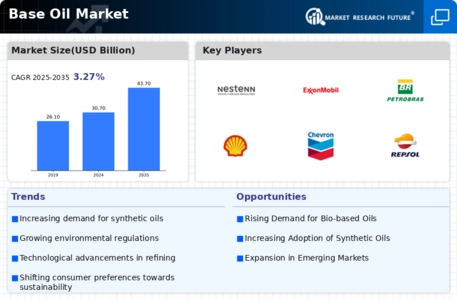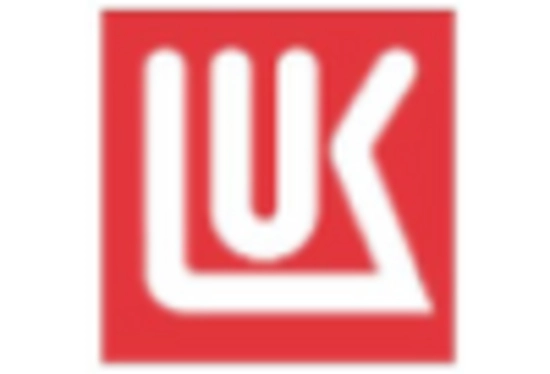Rising Demand for Lubricants
The Base Oil Market is experiencing a notable increase in demand for lubricants across various sectors, including automotive, industrial, and marine applications. This surge is primarily driven by the growing need for high-performance lubricants that enhance efficiency and reduce wear and tear on machinery. According to recent data, the lubricant segment is projected to grow at a compound annual growth rate (CAGR) of approximately 3.5% over the next few years. As industries strive for operational excellence, the demand for superior base oils, which serve as the foundation for these lubricants, is expected to rise significantly. Consequently, manufacturers are focusing on producing high-quality base oils to meet the evolving requirements of the market, thereby propelling the Base Oil Market forward.
Growth of the Automotive Sector
The Base Oil Market is significantly benefiting from the robust growth of the automotive sector. As vehicle production continues to rise, the demand for high-quality lubricants, which rely heavily on base oils, is also increasing. The automotive industry is shifting towards more efficient and durable lubricants to enhance engine performance and fuel efficiency. Recent statistics indicate that the automotive lubricants segment is expected to grow at a CAGR of 3.8% through 2026. This growth is likely to stimulate demand for base oils, particularly those that meet the specifications of modern engines. Consequently, the Base Oil Market is poised for expansion as it aligns with the evolving needs of the automotive sector.
Emerging Markets and Economic Development
The Base Oil Market is witnessing growth driven by emerging markets and economic development. Countries with rapidly growing economies are increasing their industrial output, leading to a higher demand for lubricants and, consequently, base oils. As these economies develop, there is a rising need for efficient machinery and vehicles, which in turn drives the demand for high-quality lubricants. Projections suggest that regions such as Asia-Pacific and Latin America will experience a growth rate of approximately 4.5% in lubricant consumption over the next few years. This trend indicates a promising outlook for the Base Oil Market, as manufacturers seek to capitalize on the opportunities presented by these emerging markets.
Technological Innovations in Refining Processes
Technological advancements in refining processes are playing a crucial role in shaping the Base Oil Market. Innovations such as hydrocracking and solvent extraction are enabling manufacturers to produce higher-quality base oils with improved performance characteristics. These technologies facilitate the removal of impurities and enhance the stability and viscosity index of base oils. As a result, the market is witnessing a shift towards synthetic and semi-synthetic base oils, which are gaining traction due to their superior properties. The adoption of these advanced refining techniques is expected to contribute to a projected growth rate of 5% in the synthetic base oil segment over the next five years. This trend underscores the importance of technology in driving the evolution of the Base Oil Market.
Regulatory Compliance and Environmental Standards
The Base Oil Market is increasingly influenced by stringent regulatory compliance and environmental standards. Governments worldwide are implementing regulations aimed at reducing emissions and promoting the use of environmentally friendly products. This trend is compelling manufacturers to innovate and develop base oils that meet these new standards. For instance, the introduction of low-viscosity and biodegradable base oils is becoming more prevalent as companies seek to align with sustainability goals. The market for eco-friendly lubricants is anticipated to grow, with projections indicating a potential increase of 4% in demand for bio-based base oils by 2027. This shift not only enhances the reputation of companies but also positions them favorably within the Base Oil Market.


















Leave a Comment